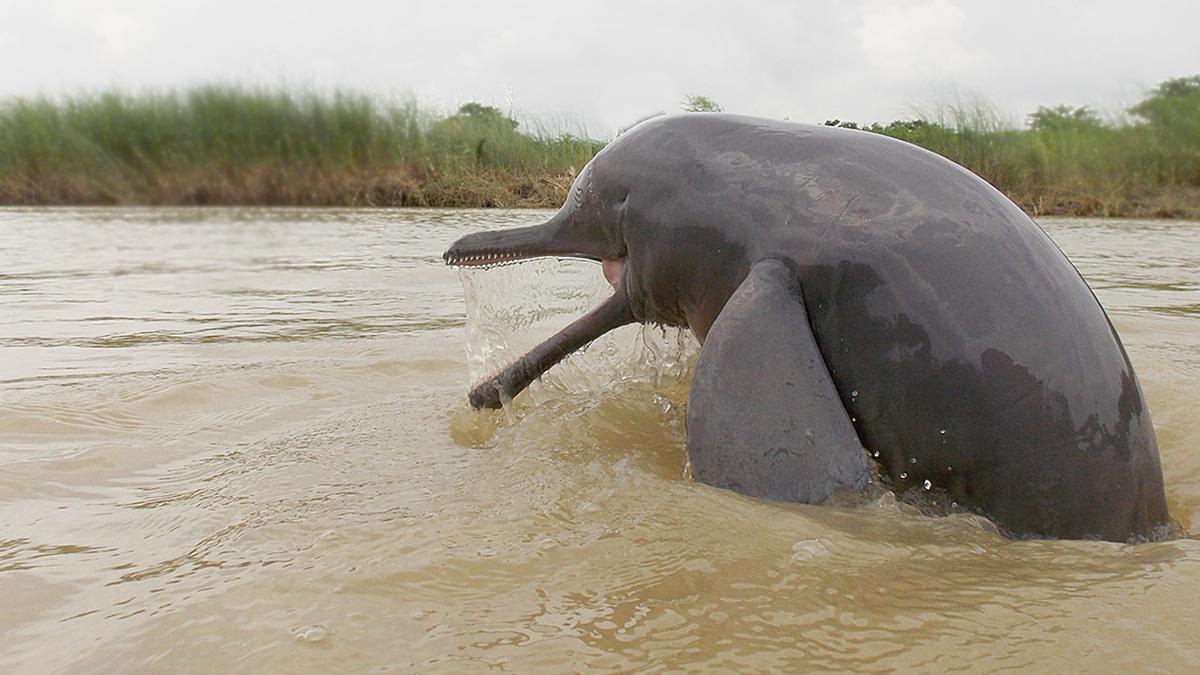First Estimate of Gangetic Dolphins Finds 6,327 Across Four States
Surprising Numbers Bring Attention to Conservation Efforts
A recent study has shed light on the estimated population of Gangetic dolphins, the only riverine dolphins in India, with a staggering count of 6,327 individuals across four states. This is the first-ever estimate of Gangetic dolphins, and the results offer valuable insights into the conservation efforts required to protect these magnificent creatures.
Key Statistics:
- 6,327 Gangetic dolphins were estimated to inhabit the river Ganga and its tributaries.
- 3,275 dolphins were found in the main stem of the Ganga.
- 2,414 were detected in the Ganga tributaries.
- 584 were spotted in the Brahmaputra mainstream.
- 412 were estimated in the Brahmaputra tributaries.
- 101 were identified in the River Beas.
Understanding the Unique Challenges of Counting Dolphins
Counting dolphins is significantly more challenging than enumerating land animals, as they spend most of their time underwater and surface only sporadically to breathe. Unlike tigers or elephants, dolphins cannot be uniquely identified using visual characteristics. To overcome this hurdle, researchers employed acoustic hydrophones – underwater microphones – to record the sounds emitted by dolphins. This innovative approach allowed them to triangulate the presence of dolphins and ensure that each individual was counted only once.
The First-Ever Estimate: A New Chapter in Conservation
This groundbreaking study marks a significant milestone in the conservation efforts for these aquatic giants. The results highlight the urgent need for targeted conservation measures, particularly in the habitats of the four states where Gangetic dolphins were most frequently spotted: Uttar Pradesh, Bihar, West Bengal, and Assam.
Expert Insights
"We must prioritize the conservation of local populations in these Gangetic States to ensure the long-term survival of these magnificent creatures," quoting Qamar Qureshi, formerly of the Wildlife Institute of India and closely associated with the survey.
Next Steps: Future Surveys
The next survey is likely to take place four years from now, requiring further training and expertise in the specialized techniques used in this study. It is imperative to invest in research that can inform effective conservation strategies, as the Gangetic dolphin population faces threats from habitat degradation, entanglement in fishing nets, and pollution.
A Call to Action
Prime Minister Narendra Modi emphasized the importance of local conservation efforts, encouraging school children to visit dolphin habitats to raise awareness about these incredible creatures. As the world marks World Wildlife Day, it is crucial that we acknowledge the significance of these findings and commit to protecting the Gangetic dolphins for future generations.
Conclusion
The first-ever estimate of Gangetic dolphins offers a major breakthrough in our understanding of these incredible creatures. As we move forward, it is essential to prioritize conservation efforts, support research, and engage the public in this vital mission. By doing so, we can ensure the long-term survival of the Gangetic dolphins and the ecosystems they inhabit.

Live News Daily is a trusted name in the digital news space, delivering accurate, timely, and in-depth reporting on a wide range of topics.
